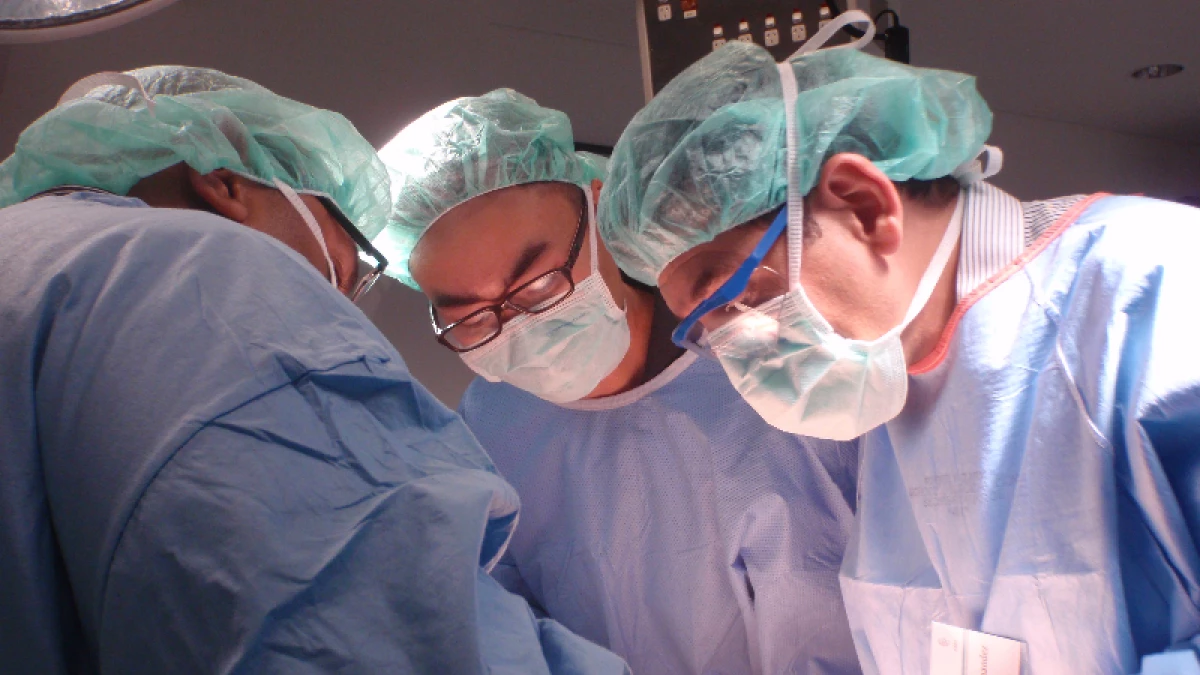04/09/2019
New method for treatment of Diabetes mellitus Type 2 at VITA Hospital
In the recent two decades, metabolic and bariatric surgery proves to be the effective method for treatment of Diabetes mellitus type 2 in patients with morbid obesity. But what is the alternative in patients with Diabetes mellitus type 2 with lower body mass index for whom we cannot speak about heavy obesity?
In the spring of 2019 in Lion, France, Symposium of IFSO /International Federation for the Surgery of Obesity and Metabolic Disorders/ was held in the spring of 2019 in Lion, France, where the results of two studies of a new surgical method for treatment of Diabetes mellitus type 2 were reported in patients with body mass index between 25 and 31 kg/m2. The conclusions are more than promising: “Either complete remission of lesion or significant reduction of antidiabetic therapy is observed after the operation, as well as reduction of body mass in patients with higher body mass index as well. The following significant correlation is established: as earlier after diagnosis of diabetes mellitus the patient is operated the bigger is the remission probability”.
VITA Hospital is the first one in Bulgaria which is able to offer this new laparoscopic method for treatment of Diabetes mellitus type 2.
What does the method is?
The operation is done by bloodless (laparoscopic) mode under general anesthesia. It is done through four miniature incisions of abdominal wall: two of 12 mm and two of 5 mm each. Anastomosis (connection) is done by laparoscopy on a specific place between jejunum (empty intestine – 2/5 of the small intestine) and ileum (twisted bowel of the remaining 3/5 of the small intestine). Thus a part of the swallowed food enters unchanged into ileum via anastomosis, and the other part follows the normal way of intestinal tract. Thus the mechanism of activation of intestinal hormones is preserved, which (as proven in the examinations in the recent five years) plays an important role in insulin production.
The patient is discharged on the second post-operative day and four control examinations are prescribed within one year after the operation.
Which patients are suitable for this type of treatment?
These are the patients with Diabetes mellitus type 2 from 1 to 9 years after its diagnosis, with body mass index between 25 and 31 kg/m2 and aged between 18 and 65 years. Clearly, the absence of contraindications for general anesthesia is compulsory. Unsuitable for such a type of treatment are the patients with Diabetes mellitus type 1, with preceding abdominal operations (intestinal resection), with chronic hepatic and renal lesions, with Crohn’s disease or with inflammatory lesions of small intestines. This manipulation is not recommended also for patients with digestive disorders, pregnancy or if such is planned within an year after the operation.
Therefore, the selection and preparation of this type of treatment of patients is very important to be done by qualified multi-disciplinary medical team, consisting of surgeon, endocrinologist, nutritional expert and psychologist.
In conclusion, the recent results prove that this operation except being anatomically preserving, with low operative risk, it is surgically reversible. These are the reasons this method to be a good alternative for treatment of badly controlled Diabetes mellitus type 2.
This is a manipulation which does not impose significant change of the mode of life of the patients and can reduce the need of treatment with many medicines. Additional studies for confirmation of efficacy, safety and reliability of the application of this operation for the surgical treatment of Diabetes mellitus type 2 is imperative, but in the spirit of the bibliographic data presented till now, it is clinically justified and long waited twist in the treatment of Diabetes mellitus type 2.
In this aspect, VITA hospital jointly with the Metabolic center to the University Hospital of North Staffordshire, Stoke-on-Trent, recruits patients for the new surgical treatment of Diabetes mellitus type 2 at the following conditions:
Age –18 to 65 years;
Body weight – between 75 and 110 kg;
Established Diabetes mellitus type 2 of not more than 9 years ago;
Absence of contraindications for general anesthesia;
Absence of more than one preceding abdominal operations;
Operation price – 2 500 BGN.
The mentioned sum does not include the primary examination which may be paid in two ways:
1. By the National Health Fund, bringing Talon No. 3 with code 5 for examination by Dr. Hristozova – endocrinologist or Talon No.3 with code 25 for examination by Dr. Mileva – surgeon.
2. By payment at the registration desk by 50% reduction of the tariff for examinations at VITA i.e. – paying only 30 BGN.
For registration, questions and clarification, please phone to the registration desk at VITA Base 2 on +359 2 45 22 000 and +359 8899 22 000.
If you would like to communicate informal with people with problems similar to yours, to seek help and advice as well as to share past experience in this sphere, join our Facebook group called Metabolic and bariatric surgery – MBAL Vita.
We are awaiting you!
If you want to receive interesting and useful information, subscribe to our email newsletter!
Newsletter subscription

 On this page, you can change your choices at any time after you have read and understood our
On this page, you can change your choices at any time after you have read and understood our